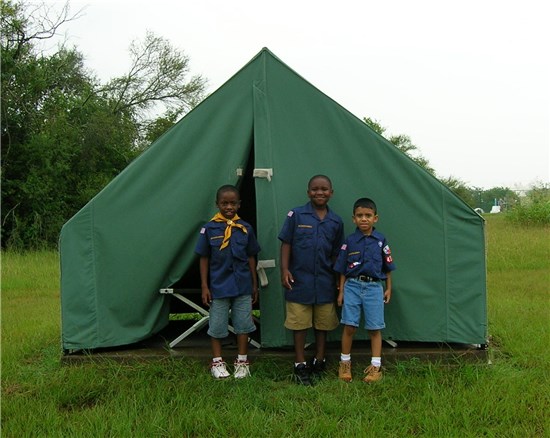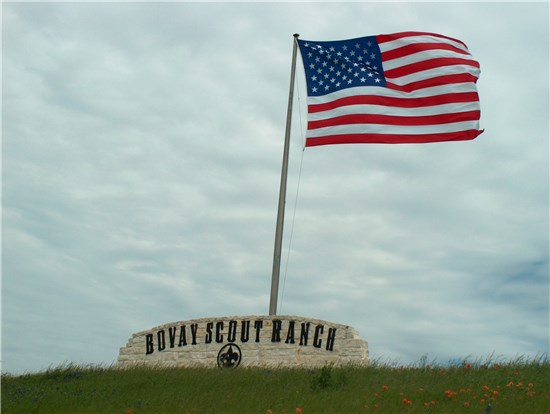 When a Scout joins Cub Scouting, they join an organization that values the fun and excitement of experiencing the outdoors. Each Cub Scout pack is encouraged to provide its youth members with enriching, positive outdoor activities. Family camping can be an exciting addition to your pack's program. During family camping, the pack leadership plans the camping program and food. The council has additional camping opportunities that include a fun, advancement based program such as day camp, resident camp and Adventure Camp.
When a Scout joins Cub Scouting, they join an organization that values the fun and excitement of experiencing the outdoors. Each Cub Scout pack is encouraged to provide its youth members with enriching, positive outdoor activities. Family camping can be an exciting addition to your pack's program. During family camping, the pack leadership plans the camping program and food. The council has additional camping opportunities that include a fun, advancement based program such as day camp, resident camp and Adventure Camp.
Pack overnighters are "pack-organized overnight events involving more than one family from a single pack, focused on age-appropriate Cub Scout activities and conducted at council-approved locations. If nonmembers (siblings) participate, the event must be structured accordingly to accommodate them. BSA health and safety and youth protection policies apply. In most cases, each youth member will be under the supervision of a parent or guardian. In all cases, each youth participant is responsible to a specific adult." (Source)
Just as young people grow, learn and mature in a continuing progression of experience so, too, do the camping and outdoor programs of the BSA. The BSA offers a continuum of experiences based on the age, interest and ability level of youth, and also offers recognition awards for all levels of Scouting outdoor Adventures. The Adventure Plan (TAP) is a tool to guide unit leaders through all stages of adventure planning. Adherence to the BSA's policies found in the Guide to Safe Scouting, Youth Protection Guidelines, and Scouting Safely are required. In addition, careful program planning will assure a positive experience for Cub Scouts and their family.
Bovay Scout Ranch
 Enjoy all the wonder and beauty of the central Texas rolling hills and lakes at Bovay Scout Ranch. Bovay has year-round camping program opportunities for pack overnighters and Webelos dens. Conveniently located 60 minutes from downtown Houston, Bovay Scout Ranch can be found just three miles south of Navasota on the east side of Highway 6, on County Road 317 (3450 County 317, Navasota, TX 77868).
Enjoy all the wonder and beauty of the central Texas rolling hills and lakes at Bovay Scout Ranch. Bovay has year-round camping program opportunities for pack overnighters and Webelos dens. Conveniently located 60 minutes from downtown Houston, Bovay Scout Ranch can be found just three miles south of Navasota on the east side of Highway 6, on County Road 317 (3450 County 317, Navasota, TX 77868).
During overnight family camping, the pack leadership plans the camping program and food. Campsites, restrooms and showers are available; however, the program areas and dining hall are not available during family camping.
In addition to overnight family camping, Bovay Scout Ranch also has full-service programs which include a fun, advancement-based program and meals: Adventure Camp, Fun with Family, Webelos Coyote Xtreme Camp, and Summer Resident Camp.
Bovay Scout Ranch Weekend Camping Reservations
Packs and Webelos dens, troops, crews and ships can camp at Bovay Scout Ranch.
Dates
(click on date to register) |
Cost |
Additional Considerations |
Additional information |
|
|
$75 per campsite (capacity of 50; includes day usage fee) |
Packs, Webelos dens can camp. Campsites accommodate 50 campers per site. During overnight camping, the unit leadership plans the camping program and food. Campmasters issue campsite assignments upon check-in.
Packs can camp Tellepsen Scout Camp if the dates listed to the left are full and also on weekends when overnight camping isn't offered. |
Review:
• Leader's Guide below
All participants must follow:
• BSA Leadership and Youth Protection Requirements
• Guide to Safe Scouting
Units need to submit a roster
• Roster
|
 Support desk (for questions not addressed on this page).
Support desk (for questions not addressed on this page).